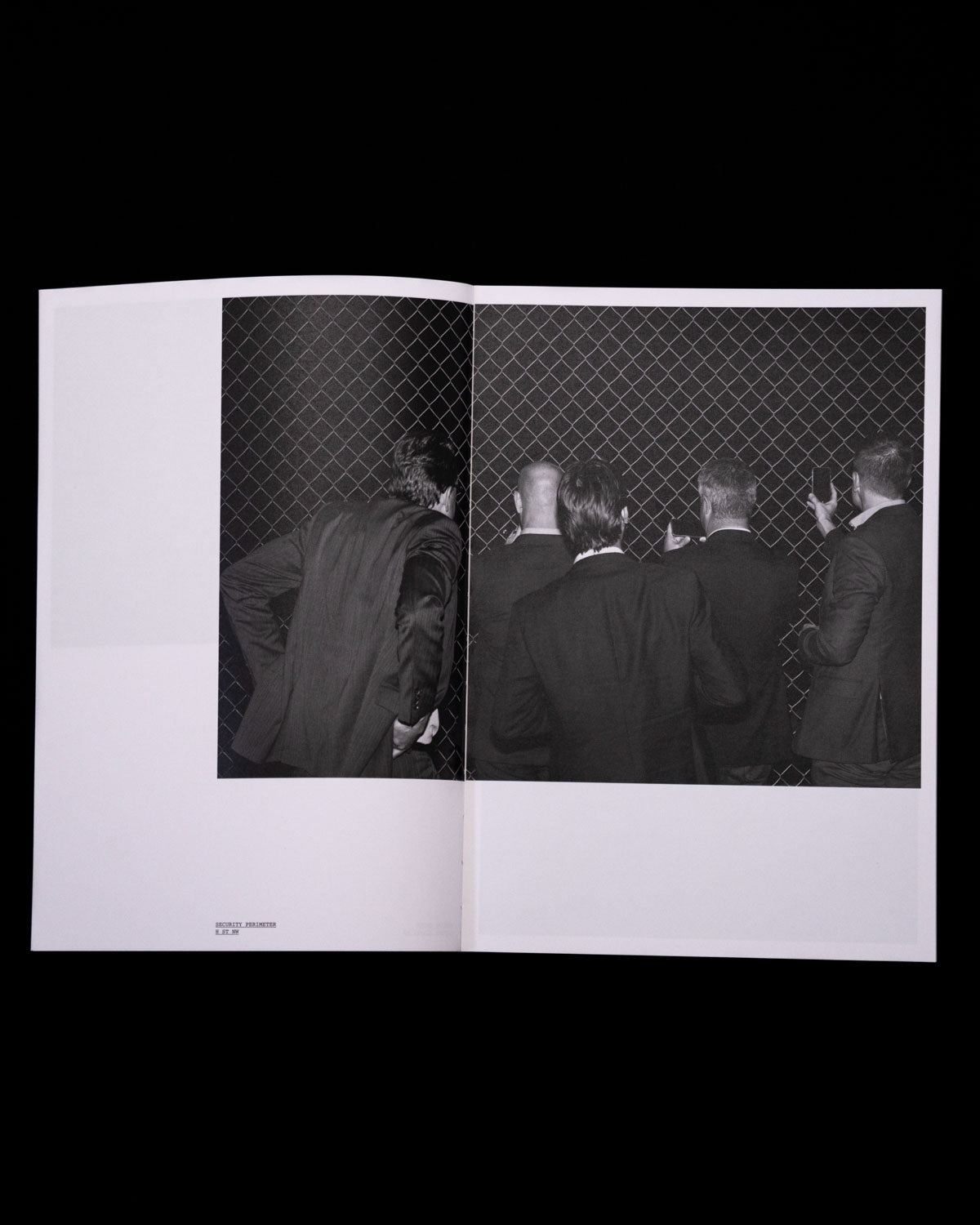FEDERAL TRIANGLE by Mike Osborne, Gnomic Book
Gnomic Book, 2019
11.4 × 8.3 in
144 pages
Linen hardcover
First edition
“It occurred to me that Mike Osborne’s Federal Triangle is the kind of response some of us are seeking to reflect our assertions and at the same time take what we think we know as itself a fallible system of information—Photography—as its mode of communication. The medium places itself very well in such a case study as Osborne indirectly alludes to the wider conversation above, albeit through an explicit focus on the US political system located around Washington DC. Osborne’s imaginary triangle covers the area between The Capitol, The White House and the National Mall. It is something of a “Bermuda Triangle” of opaque political activity, that to the onlooker is visible only under close surveillance. In making this work, Osborne does exactly that, with his camera searching for evidence to support a theory bordering between the slightly paranoid and the surely absurd idea that there are sinister powers at play hidden from the ordinary person.”
—Sunil Shah for ASX
One of TIME Magazine’s best photobooks of 2019, Federal Triangle fuses a documentary approach to photography with the opportunity for alternative interpretations: simultaneously grounded in the real, and suggestive of the darker fantasies that pervade our political landscape.
The project, titled after a government complex wedged between the Capitol and the White House, is a series of brief encounters with the trappings of power. Men with earpieces gather on corners next to cars bearing diplomatic plates. Black Suburbans idle in the alleys behind Georgetown mansions. Gardeners receive security inspections before entering walled compounds.
Quotidian but intriguing, and sometimes darkly comical, these glimpses into the workings of our democracy gave rise to a range of questions. If I were prone to paranoid projections, what kinds of encounters might activate my darker conspiratorial fears and fantasies? What scenes and situations would evoke the paradoxical feeling of being close to yet far removed from the levers of power?
Federal Triangle engages these kinds of questions in pictorial terms. The photographs are deeply ambiguous: everyday scenes are tinged with the possibility of violence and conspiracy. Withholding more than they reveal, they invite projections that speak to the fear, doubt, dysfunction, and absurdity of our current moment.







